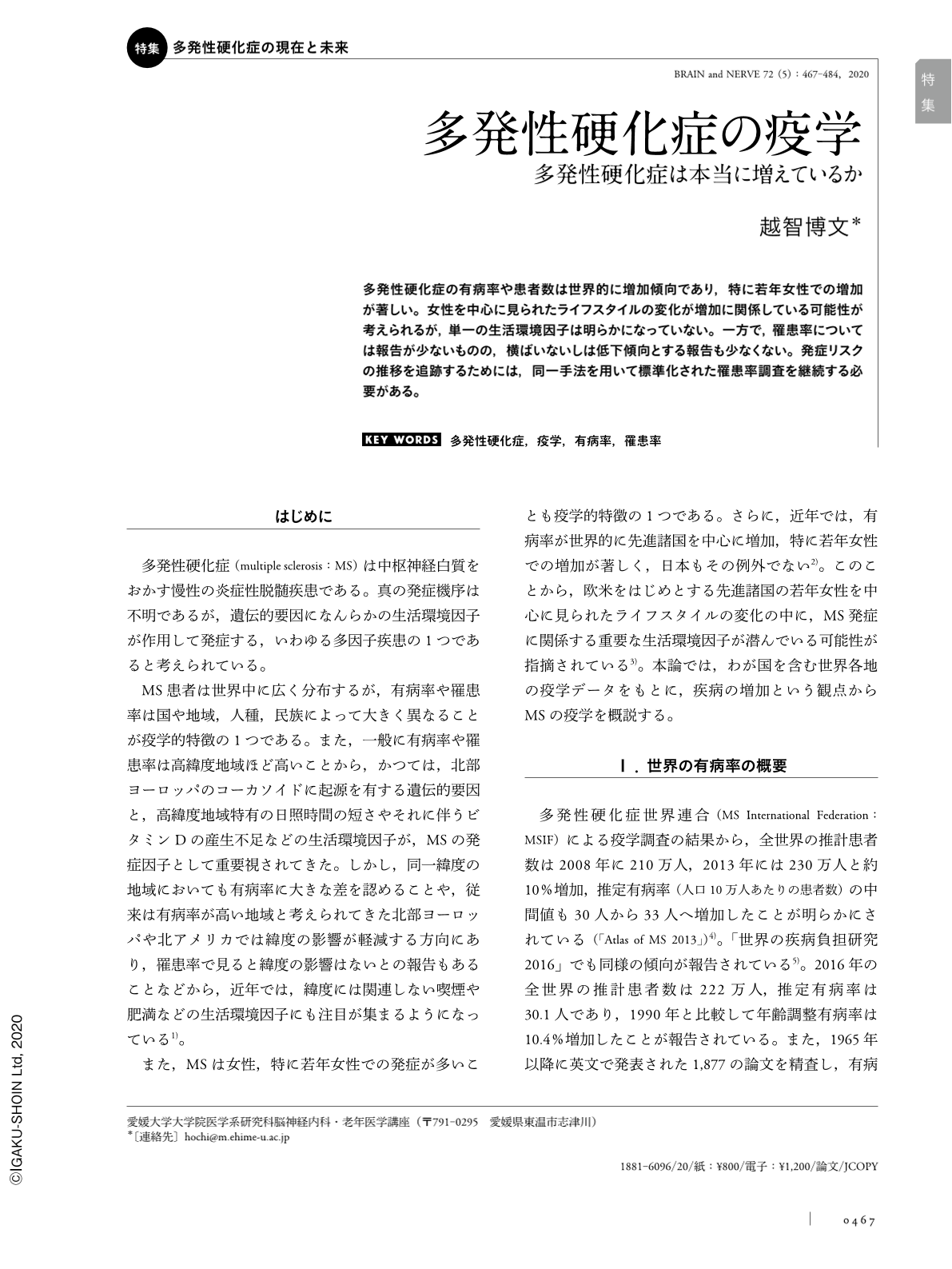Japanese
English
- 有料閲覧
- Abstract 文献概要
- 1ページ目 Look Inside
- 参考文献 Reference
多発性硬化症の有病率や患者数は世界的に増加傾向であり,特に若年女性での増加が著しい。女性を中心に見られたライフスタイルの変化が増加に関係している可能性が考えられるが,単一の生活環境因子は明らかになっていない。一方で,罹患率については報告が少ないものの,横ばいないしは低下傾向とする報告も少なくない。発症リスクの推移を追跡するためには,同一手法を用いて標準化された罹患率調査を継続する必要がある。
Abstract
Multiple sclerosis (MS) is a worldwide disease with an uneven geographic distribution. There has been a sharp increase in MS prevalence over time almost throughout the world, including Japan. The reasons for the increase in the prevalence of MS are unknown. However, evidence suggests that genetic and environmental factors and their interaction contribute to the etiology of MS. Therefore, the increase in prevalence can be attributed in part to a greater exposure to certain environmental risk factors in genetically susceptible individuals and also to increased survival rates and improved assessment. To clarify whether the increase in MS prevalence reflects a real increase in disease frequency, it is essential to assess temporal and geographical differences in MS incidence and to compair incidence in different ethnic populations. However, epidemiological data on incidence are limited, and there are marked geographical disparities in available data, most of which were obtained from studies in Europe and North America. In addition, there are marked variabilities in methodology, objectives, and study periods. Further epidemiological studies with appropriate standardization are needed to determine whether the risk of MS has changed over time.

Copyright © 2020, Igaku-Shoin Ltd. All rights reserved.


